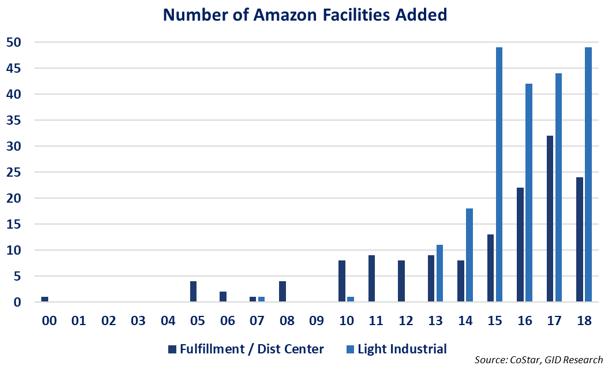
Need for Delivery Speed: A New Focus on Speed to Consumer Has Online Retailers Setting Their Sights on Light Industrial
E-commerce emerged as a challenge to the traditional brick and mortar retail model in the late 1990s. As fledgling disrupters, e-commerce firms focused on price competition, attempting to attract consumers to online exchanges by promising better pricing. This business approach required a cost-effective supply chain and product distribution strategy, leading e-commerce providers to target large, centrally located warehouses that could service many locations. As the table below demonstrates, first-movers in the e-commerce space, like Amazon, initially followed this strategy, absorbing primarily large distribution warehouses.
With maturation, online retailers have gone beyond price to challenge traditional sellers on selection, quality, and even convenience. Delivery speed has proven fundamental to this evolution and turned the previous supply chain model on its head. In order to increase speed to customer, firms have been forced to locate inventory closer to consumers, increasing the total inventory carried as well as the warehousing required. Consequently, firms have shifted away from the hub model of a single, remotely located warehouse, toward many small to medium-sized warehouses near population centers. This shift is echoed in Amazon leasing activity shown below, suggesting the evolution of the distribution chain favors light industrial real estate.

Please contact industrialresearch@gid.com for additional information.
PDF Copy_The Shift Towards Light Industrial Has Only Just Begun
